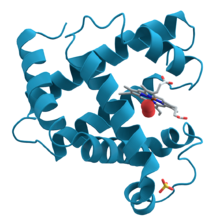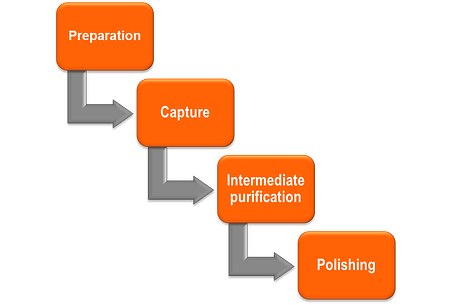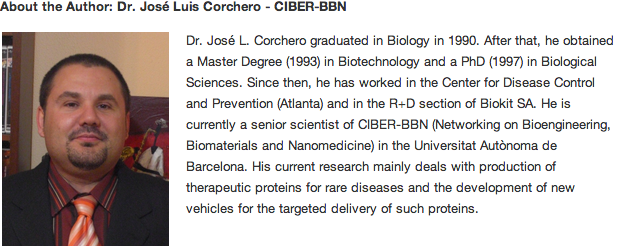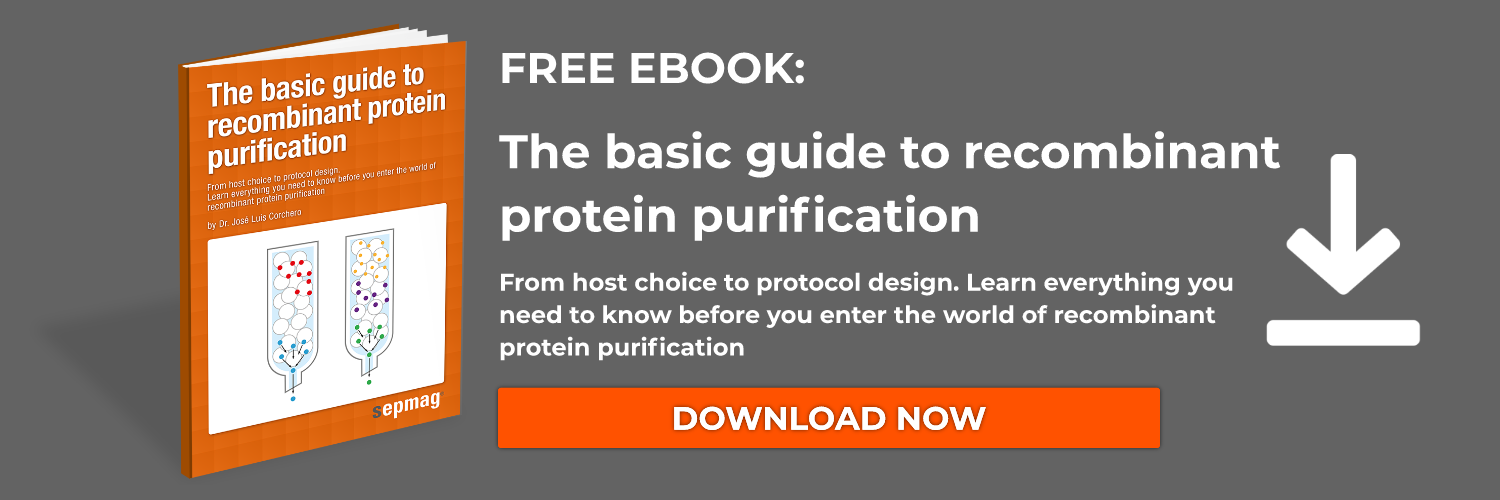Human beings extensively use proteins for different purposes such as health, industrial production or food. Nevertheless, most of these proteins come from natural sources that do not produce them in sufficient quantities for human use; therefore, we turn to the use of recombinant proteins. Such proteins are obtained from organisms (called “host organisms”) that do not produce them naturally, and in which the gene of the protein of interest is incorporated.

This opens a plethora of possibilities in the production of proteins of interest to humans, but as we can imagine, there are also many questions emerging when planning how to obtain them:
- What advantages does the use of recombinant proteins have?
- What is the best host organism to produce them?
- How do we get this organism to produce the protein?
This post is an overview of our protein purification handbook, which explains the basics of recombinant protein purification. Download The Basic Guide to Recombinant Protein Purification here:
Getting into the protein purification handbook
A key aspect from our protein purification handbook to take into account is that there is always the need to purify a protein before using it for any purpose, since we have to separate it from the rest of the contaminants in the culture medium in order to be able to work properly with it. This purification process can reach various degrees of purity, although the most demanding ones will be usually reserved for the most delicate uses, such as therapeutic purposes.
Purification processes can be performed through several techniques; however, the most commonly used is chromatography, which relies on separating molecules according to differences in their properties such as size or electric charge. Although affinity chromatography is the preferred method, due to its efficiency, we can also note the ion exchange, hydrophobic or gel filtration chromatographies. In addition to these standard chromatographies, there are alternative methods that are being used, such as magnetic bead separation, due to the several advantages they offer.
The step-by-step process of protein purification
Purification processes are usually composed by various steps, being the final goal to obtain the protein of interest with the highest possible level of purity, starting from the cell culture producing the protein. Thus, previous to the chromatographic methods, there is always an initial preparation step, in which producer cells and the culture medium are separated. If the target protein is located within the cell fraction, there is the need to lyse the cells and clarify the sample in order to eliminate larger particles or aggregates that could interfere in further steps.

After the preparation step, our target protein is ready to be separated from contaminants, in the so called the “capture phase”. Highly specific methods such as affinity chromatography allow us to obtain a high level of purity in a single step. However, some cases might need the combination of several steps in order to achieve the desired results.
For protein purification with delicate uses and that require a very high level of purity, such as therapeutics, there should be a final step called polishing, which separates the protein of interest from the remaining contaminants in order to obtain the final, desired high level of purity.
¿How do I plan my purification process?
The planning of a purification process is based on several factors, spanning from the properties of the recombinant protein to its final application. We have included ideas and advices for this planning in this guide. The selection of the purification techniques applied in each step is not accidental, but it’s based on the purpose of each of these steps. The resolution, capacity, speed and recovery of each technique are always taken into account.

Finally, we have to consider the existing alternatives for protein purification, for example the magnetophoretic procedures. These techniques, based on the use of magnetic particles as a solid phase, eliminate some of the time-consuming sample preparation steps, such as clarification, and they reduce buffer volumes and time.
¿Did you enjoy this post? You can find the whole protein purification handbook by clicking the button below this line:





